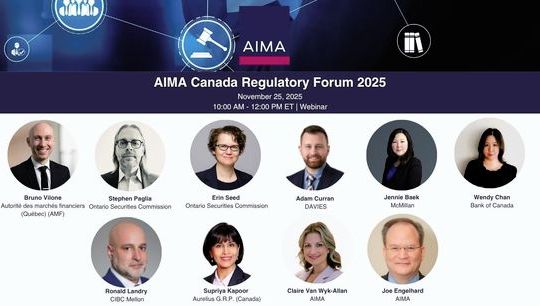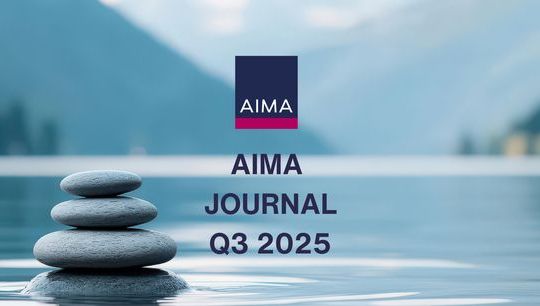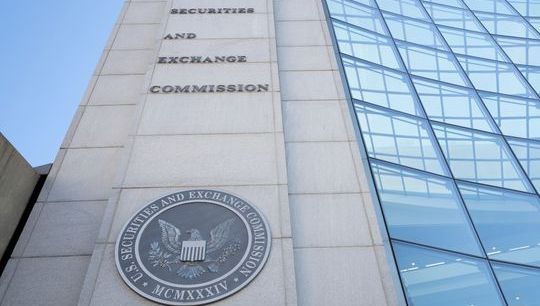Evolvement of programme trading regulation in China
By Melody Yang; Alan Tang, Simmons & Simmons
Published: 23 June 2025
In today’s world, algorithms and data play pivotal roles across various industries, particularly in the asset management sector. Similarly to other financial markets, China’s approach to programme trading and its regulations has evolved rapidly in recent years.
Over years of deliberation and debate, Chinese regulators have now adopted a more pragmatic view on programme trading. They acknowledge its legality but believe that there is a need for enhanced regulations to ensure fair, transparent and orderly markets. This perspective is clearly articulated in the Opinions on Strengthening Regulation, Preventing Risks and Promoting the High-Quality Development of the Capital Markets, issued by the State Council in April 2024.
In response to this policy direction, the China Securities Regulatory Commission (CSRC) has introduced a series of regulatory measures to oversee and control programme trading practices, in the securities market - specifically narrowed down to exchange-traded equities and bonds as defined under Chinese law - and the futures markets. The validation of the legality of programme trading in China has been particularly reassuring for quantitative market participants, who had been unsettled for some time due to regulatory probes into the programme trading while the authorities remained silent on its legality.
I. Regulatory developments in the securities market
In May 2024, the CSRC issued the Regulation Measures on the Programme Trading in the Securities Market (Securities Programme Trading Rules), which came into effect on 9 October 2024.
Following the release of the Securities Programme Trading Rules, the Shanghai Stock Exchange (SSE) and the Shenzhen Stock Exchange (SZSE) have formulated their respective implementation rules, which were officially released on 3 April 2025 and would come into effect on 7 July 2025.
Here below are some highlights of the Securities Programme Trading Rules and the implementation rules from SSE and SZSE:
- Scope of application: It is clarified that programme trading includes automatically selecting specific securities and trading timing according to a set strategy or automatically executing trading instructions according to a set algorithm, as well as other behaviours that conform to the characteristics of programme trading. In other words, even if portfolio managers exercise discretionary investment decisions, the use of programme trading software to execute these decisions will likely bring them under the scope of the Securities Programme Trading Rules.
- Reporting obligations: Market participants are required to file an initial report containing details about the size of funds, leverage, broker contact details, declaration rates or volume, trading strategies, and trading software before commencing trading; certain material changes may also lead to a subsequent filing.
- Extra abnormal activities introduced: The Securities Programme Trading Rules further specify that the following behaviours are considered market abnormalities and will be monitored under heightened scrutiny. Exchanges have internally passed on their guidance to the brokers, which aims to quantify those trading abnormalities by, during a given time period, price movement, index movement, trading volumes, number of orders issued and cancelled etc., but have not yet published the same. Notably, these newer market abnormalities are either stricter than those in the existing rules (like Items (A) – (C)) or entirely new (like Item (D)) with an aim to deal with the propensity to intensify market volatility caused by programme trading.
- Unusual instantaneous declaration rates, which refer to a large number of declarations or cancellations in one second;
- Frequent instantaneous cancellations, which refer to frequent instances of quick cancellations after declarations in one second throughout the day;
- Frequent price manipulations (i.e., price pumping and dumping), which refer to multiple instances of minor price manipulations on single or multiple stocks in one minute throughout the day;
- Large transactions in a short time, which refer to particularly large buying (selling) amounts in one minute; and
- Other abnormal trading behaviours that the Exchange believes need to be closely monitored.
- High-frequency trading: HFT is currently defined as programme trading with the following characteristics (which may evolve over time), with extra reporting obligations attached:
- The maximum number of declarations and cancellations per second for a single account reaches more than 300; or
- The maximum number of declarations and cancellations per day for a single account reaches more than 20,000; or
- Other situations determined by the Exchange
- Stock Connect and Swaps included: The Securities Programme Trading Rules are intended to cover overseas investors who trade under the Qualified Investor Scheme (QFI), Stock Connect scheme and swap arrangements into its purview. In April 2025, the SSE and SZSE issued for public comment the reporting guidelines for Stock Connect investors, which largely align with the existing requirements whilst accommodating certain practical differences between PRC and Hong Kong. Chinese regulators may then turn to focusing on trading in the PRC securities market via swaps at a later stage, e.g., in the second half of 2025 or even later.
- DMA and Colocation: The Securities Programme Trading Rules indicate that eligible brokers may re-activate direct market access (DMA) for external clients, allowing them to connect directly to the exchanges via the broker’s trading counter once further technical details are promulgated. Additionally, colocation may also become legally permissible for future securities trading in China (whereas it is currently only open to international participants for acquiring market data). Please note that DMA has not yet been fully made available to all investors, including overseas participants. As a result, certain market players rely on alternative methods to achieve similar albeit suboptimal effects of DMA.
II. Regulatory Developments in the Futures Market
Notably, the Securities Programme Trading Rules do not apply to trading in the futures market, where programme trading and even HFT are allowed, with or without colocation arrangements established, after a relatively straightforward reporting and registration process is completed with the futures exchanges. According to verbal guidance from these exchanges, the current quantifiable standard for “programme trading” in the futures market is defined as the occurrence of 5 or more instances of placing 5 or more orders (regardless of underlying contract) within 1 second by the same client on the same trading day.
CSRC caught up on its efforts to regulate programme trading in the futures market and issued Regulation Measures on the Programme Trading in the Futures Market (Trial) (Futures Programme Trading Rules) on 13 June 2025. The Futures Programme Trading Rules have not caught the market by surprise, as their main objective is to convert the informal verbal guidance previously provided by regulators (widely known as “window guidance”) into formal legal regulations, and it does not create substantially new requirements. According to our sources, the current goal is to officially issue the Futures Program Trading Rules within the next five to six months.
Here below are some highlights of the Futures Programme Trading Rules:
- Scope of application: It is clarified that these provisions apply to all programme trading (including from overseas) in the futures market within PRC, regardless of whether such activities are conducted through futures brokers or directly by non-member participants.
- Reporting obligations: Under the current practice, before commencing any programme trading activities, all investors need to ensure that they have filed and reported their programme trading activities and information on account, trading and software details to the relevant futures exchange (which is effectively a review and approval from the futures exchange). This process needs to be completed by a futures broker that is a member of the relevant futures exchange. The Futures Programme Trading Rules have not deviated from the existing requirements but raised heightened disclosure requirements on HFT players.
- Emphasis on market abnormalities: Futures exchanges have already had very robust mechanism in place to prevent market abnormalities. The Futures Programme Trading Rules have now set out the following principles to target major market abnormalities such as spoofing and reduce the impact the HFT may have when requiring immediacy during its trading process. Please note that whilst Items (A) and (B) sound similar to those in the existing rules, Item (C) seems to be newly introduced to elaborate on market abnormality in relation to programme trading.
- Excessive order placements or cancellations within a short time frame or during a single trading day that exceed predefined thresholds;
- High order-to-trade ratio, either within short periods or over the course of a trading day, reaching established limits;
- Large, consecutive, or dense order placements within a short period that meet certain thresholds, with noticeable abnormalities in futures trading prices or volumes;
- Other circumstances identified by the futures exchange that warrant close supervision and monitoring.
- DMA and Colocation: DMA and colocation have been allowed for futures players to acquire market data or trade Chinese futures quantitatively. The Futures Programme Trading Rules reaffirm these arrangements while clarifying the risk management responsibilities of futures brokers.
Conclusion
In 2025, Chinese market is likely to witness the issuance of more detailed standards and regulations governing programme trading in both the securities and futures markets, with detailed transparency and reporting requirements, tiered fee structure associated with HFT, and heightened regulation over order execution, risk management and market conduct.








